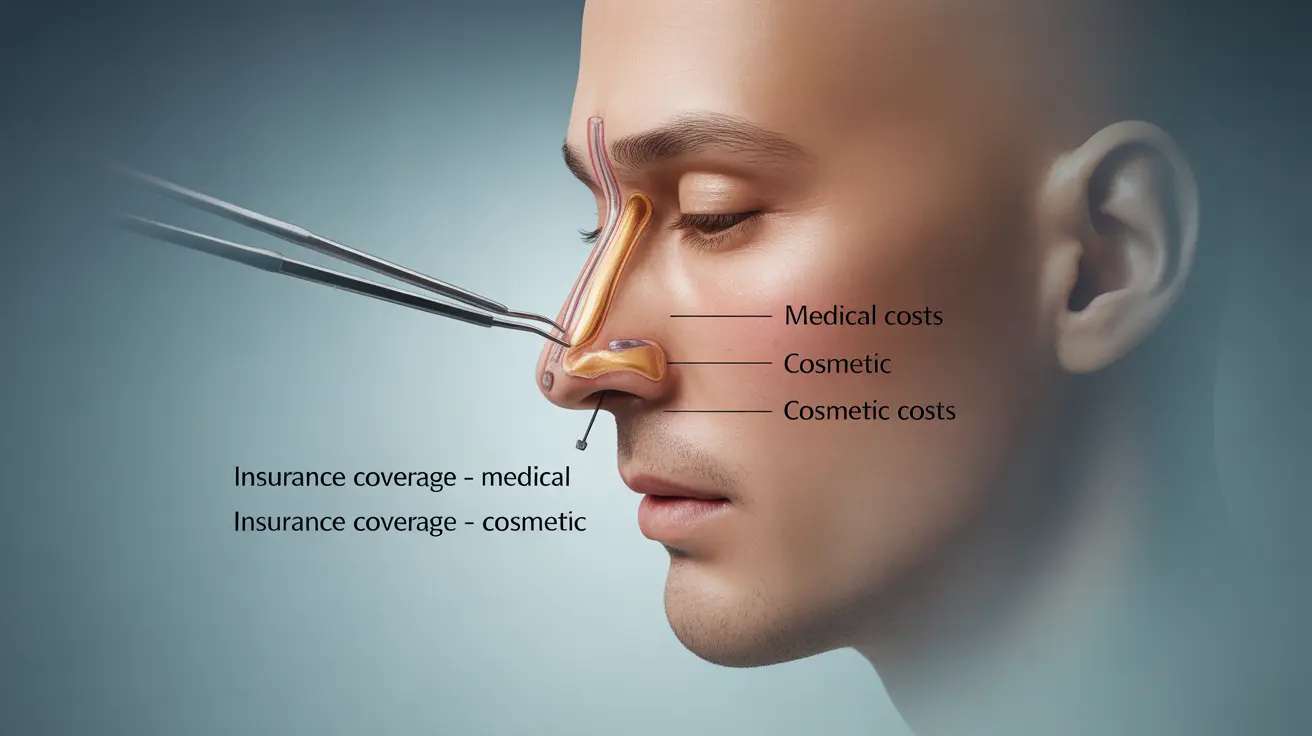Understanding the costs associated with septorhinoplasty can be complex, especially when dealing with insurance coverage and out-of-pocket expenses. This comprehensive guide will help you navigate the financial aspects of this combined functional and cosmetic surgical procedure.
Whether you're considering septorhinoplasty for medical necessity, aesthetic improvements, or both, being informed about the costs and coverage options is crucial for making an educated decision about your healthcare.
Understanding Septorhinoplasty and Insurance Coverage
Septorhinoplasty combines two procedures: septoplasty (correction of a deviated septum) and rhinoplasty (cosmetic nose reshaping). Insurance companies typically approach these components differently, which significantly impacts the overall cost to patients.
Medical vs. Cosmetic Components
The septoplasty portion, being medically necessary, often receives insurance coverage when properly documented. However, the rhinoplasty component is usually considered cosmetic and typically requires out-of-pocket payment.
Typical Cost Breakdown
Insurance-Covered Portion
When medical necessity is established, insurance may cover 80-100% of the septoplasty component, including:
- Operating room fees
- Anesthesia related to the functional repair
- Surgeon's fees for septum correction
- Post-operative care for the functional aspect
Out-of-Pocket Expenses
The cosmetic portion typically requires personal payment, which may include:
- Surgeon's fees for aesthetic modifications
- Additional operating room time
- Cosmetic-related anesthesia costs
- Follow-up visits specific to aesthetic results
Determining Insurance Coverage
To maximize insurance coverage for the functional portion of septorhinoplasty, patients should:
- Document breathing difficulties
- Obtain proper medical imaging
- Secure pre-authorization from insurance
- Work with an in-network surgeon
- Maintain detailed medical records
Financial Planning and Payment Options
Several options exist to manage the cosmetic portion's expenses:
- Medical financing programs
- Healthcare credit cards
- Payment plans through the surgical practice
- Health savings accounts (HSAs)
- Flexible spending accounts (FSAs)
Frequently Asked Questions
What is the typical out-of-pocket cost for septorhinoplasty if my insurance only covers the septoplasty portion?
The out-of-pocket cost typically ranges from $3,500 to $8,000 for the cosmetic portion alone, depending on the complexity of the desired changes and your geographic location. This amount represents the rhinoplasty component not covered by insurance.
Does health insurance usually cover septorhinoplasty when it is performed for a deviated septum and cosmetic reasons combined?
Insurance typically covers only the functional septoplasty portion when medical necessity is documented. The cosmetic rhinoplasty component is usually not covered, even when performed simultaneously.
How can I find out if my insurance will cover the functional part of septorhinoplasty surgery?
Contact your insurance provider directly to verify coverage, submit required documentation from your surgeon, and request pre-authorization. Your surgeon's office can often assist with this process and provide the necessary medical documentation.
What factors affect whether rhinoplasty (cosmetic part) of septorhinoplasty is covered by insurance?
Insurance coverage for the rhinoplasty portion is rare and typically only considered if the cosmetic changes are necessary to achieve the functional improvement, such as in cases of severe trauma or congenital defects affecting breathing.
Are there financing options available to help pay for the cosmetic portion of septorhinoplasty?
Yes, multiple financing options are available, including medical credit cards like CareCredit, personal loans, payment plans through your surgeon's office, and healthcare-specific financing programs. Some practices also offer in-house financing options with varying terms and interest rates.




